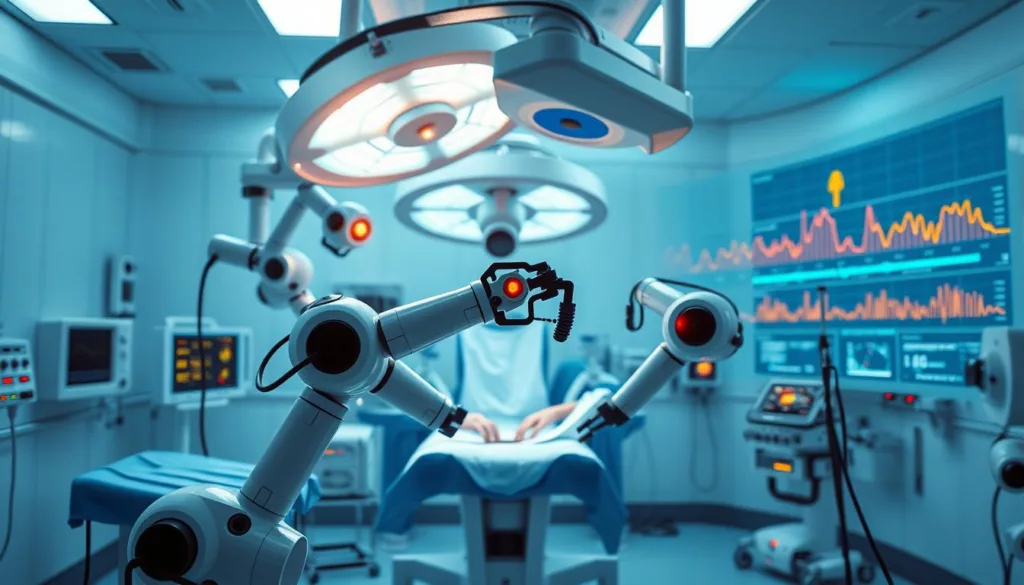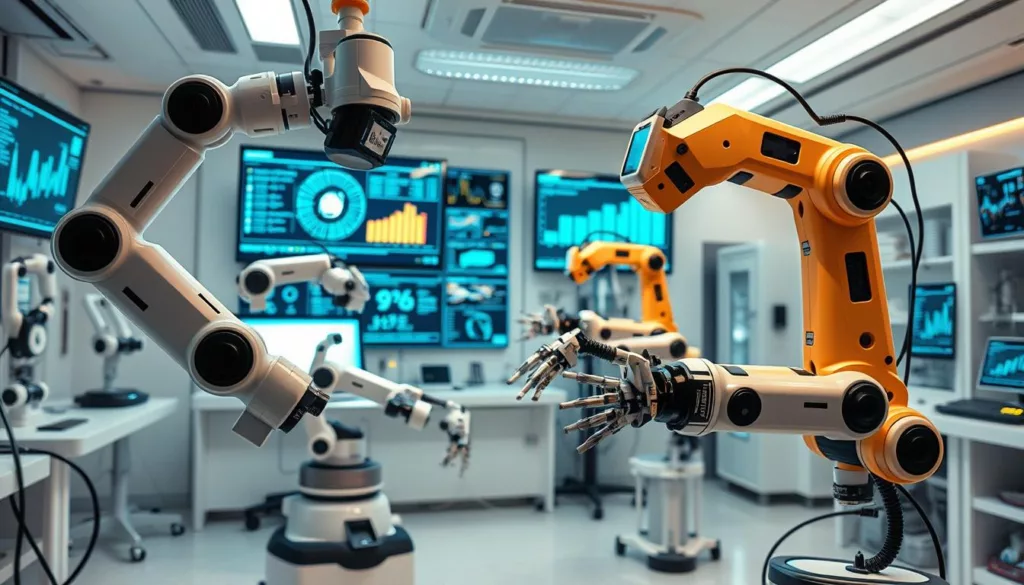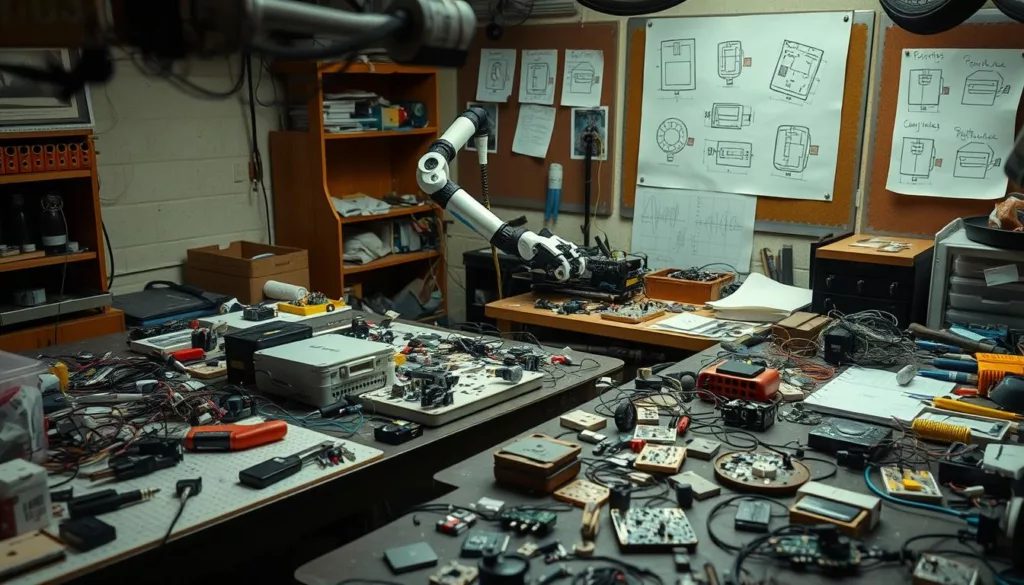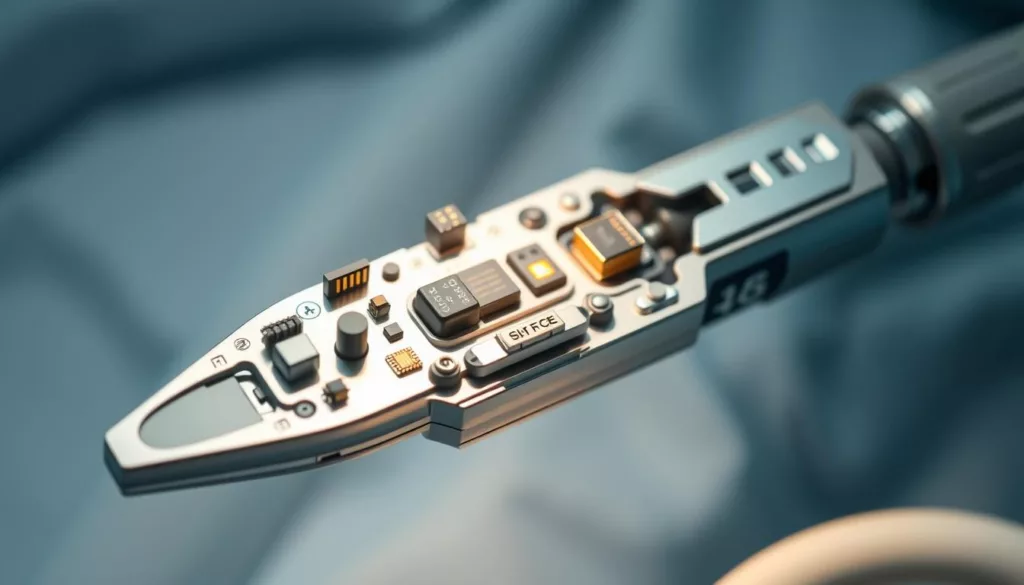In the fast-growing field of medical robotics, low-cost sensors are key. They make robotic-assisted medical devices more efficient and accessible. At XJCSENSOR, we focus on creating customized sensor solutions for healthcare. This helps bring advanced technology to more healthcare providers.
We aim to balance cost and technology in our medical robotics solutions. Our solutions use the latest sensor technologies, ensuring quality without high costs. This article will show how low-cost sensors are changing robotic surgery and healthcare’s future.
Key Takeaways
- Low-cost sensors enhance accessibility in medical robotics.
- XJCSENSOR specializes in customizable sensor solutions for healthcare.
- Cost-efficiency does not compromise quality in robotic surgery.
- Integration of affordable sensors is key for patient care advancements.
- Innovations in sensor technologies are transforming healthcare.
The Importance of Sensors in Robotic Surgery
Sensors are key in robotic surgery, bringing a big leap in precision and control. The importance of sensors goes beyond just working. They make robotic surgery better, leading to better results for patients.
Many types of sensors are used in surgery, like:
- Pressure sensors
- Temperature sensors
- Motion sensors
These sensors give surgeons real-time data. This helps them make better choices during surgery. The sensors also make surgery safer, cutting down on mistakes and complications.
Good sensor use builds trust in robotic surgery. It shows how sensors can change traditional surgery for the better.
Understanding Low-Cost Sensor Technologies
Low-cost sensors are key in medical robotics. They help improve surgical results and keep costs down. These sensors include optical, ultrasonic, and capacitive types. Each has its own benefits in healthcare.
Optical sensors use light to measure things accurately. They’re great for imaging and finding tissues. Ultrasonic sensors use sound waves to measure distance and find problems. Capacitive sensors detect pressure and how close something is, which is important for surgery.
These sensors have gotten better and cheaper to make. New materials and ways to make them have cut costs. This makes it easier for more places to use them in medical robots.
XJCSENSOR is a leader in making low-cost sensors for healthcare. We focus on quality to help doctors do better work without spending too much.
Challenges in Implementing Affordable Sensors
Adding affordable sensors to robotic medical tools is tough. It’s key for those wanting to use new healthcare tech well.
One big problem is regulatory compliance. Medical devices must follow strict rules from groups like the FDA. Companies face a hard time meeting these rules while keeping costs down.
Scalability for making lots of sensors is another big issue. Companies want to make sensors cheaply but also keep quality high. This can lead to sensor integration challenges that slow down projects.
Getting low-cost sensors to work with current medical robots is hard. Different devices use different ways to talk to each other. Fixing these issues is vital for the sensors to work right in hospitals.
To show these challenges better, we made a summary table. It highlights main problems and their effects:
| Challenge | Implication |
|---|---|
| Regulatory Compliance | Delays in market entry and added costs for testing and certifications. |
| Scalability | Risks of quality compromise during mass production. |
| Integration Issues | Potential functionality gaps leading to ineffective medical applications. |
| Cost Management | Challenges in maintaining a balance between affordability and product quality. |
Affordable Sensors for Robotic-Assisted Medical Devices
Using affordable sensors in robotic-assisted medical devices changes surgery. It makes advanced tech both affordable and effective. These sensors help with many medical robotics applications. They meet different surgical needs, helping hospitals improve patient care without spending too much.
Benefits of Using Affordable Sensors
There are many good things about using affordable sensors in surgery. Some of these benefits are:
- Cost savings: These sensors help save money for hospitals.
- Enhanced accessibility: They make it easier for more places to use robotic tech.
- Improved surgical precision: They give surgeons accurate data for better surgery.
Examples of Sensor Applications in Medical Robotics
There are many ways affordable sensors help in surgery. Here are a few examples:
- Laparoscopic surgeries: They help see better and move instruments more easily. This leads to less invasive surgeries and faster recovery.
- Orthopedic surgeries: They help place joints correctly during replacements. This improves how well patients do after surgery.
Key Features of Cost-Effective Sensor Solutions
Cost-effective sensor solutions are key in medical robotics. They ensure high performance without losing quality. Their features, like accuracy and durability, make them vital in surgery.
Accuracy and Precision in Measurements
Cost-effective sensors are known for their accuracy in medical devices. In surgery, small errors can cause big problems. At XJCSENSOR, we focus on keeping measurements accurate. This lets doctors trust the data they get during operations.
Durability and Reliability in Surgical Settings
Durable sensors are a big plus in robotic surgery. If a sensor fails during surgery, it can be dangerous. We make sure our sensors can handle tough conditions and stay reliable. This builds trust in the equipment used in surgeries.
| Feature | Description | Benefit |
|---|---|---|
| Accuracy | High precision measurements | Reduces risk of surgical complications |
| Durability | Withstands harsh surgical environments | Enhances reliability and trust |
| Cost-effectiveness | Affordable sensor solutions | Makes advanced technology accessible |
In summary, the main features of cost-effective sensors are accuracy and durability. These are key for successful surgeries. By focusing on these, we offer solutions that meet today’s medical needs.
Integration of Low-Cost Sensors into Surgical Instruments
Effective sensor integration is key for better surgeries and patient care. Low-cost sensors give real-time data and feedback. This helps surgeons work more accurately.
Our approach includes:
- Prototype Testing: We test sensors in different situations to find their best performance.
- Collaborative Design: We work with medical device makers to make sure sensors fit with current tools.
- Feedback Mechanisms: We keep talking with surgeons and engineers to make sensors better over time.
We focus on making surgical tools work well and easy to use. By using smart sensor integration, we improve the safety and precision of surgeries.
Enhancing Patient Safety through Sensor Technology
Sensor technology is key in making robotic surgery safer. It lets medical teams watch vital signs all the time. This gives them feedback right away, helping them stay alert in the operating room.
Using strong sensors means getting accurate data. This data helps teams make quick, smart choices. At XJCSENSOR, we focus on making top-notch sensors to keep patients safe during surgery.
- Real-time monitoring of vital signs enhances surgeon responsiveness.
- Data accuracy aids decision-making processes during procedures.
- Customized sensors address specific safety concerns in surgical environments.
As sensor tech gets better, so do robotic surgeries. This builds trust between patients and doctors.
Advancements in Healthcare Technology and Robotics
Healthcare technology has made huge leaps, with a big focus on medical robotics. New tools have changed surgery, making it more precise and improving patient results. Advanced sensors are key to these changes.
Now, machine learning helps surgeons make quick, smart choices. As we look ahead, robots will play a bigger role in surgeries. They make procedures less invasive and more accurate.
Custom sensors, like those from XJCSENSOR, are vital. They improve the tools used in robotic surgeries, making them more reliable and effective.
Healthcare tech keeps getting better, leading to exciting changes in surgery. Automation and quick data analysis will shape the future of surgical robots. This will change how surgeons work and improve patient care.
| Advancement | Description |
|---|---|
| Machine Learning | Enables predictive analysis for improved decision-making during surgery. |
| Custom Sensors | Delivers precision force measurements for better instrument control. |
| Robotic Automation | Assists in minimally invasive procedures, reducing recovery times. |
| Data Integration | Facilitates real-time data access, enriching surgical outcomes. |
Minimally Invasive Procedures and Their Impact
Minimally invasive procedures are changing healthcare. They use small cuts, causing less harm to the body. The success of these methods depends a lot on the role of sensors. Sensors help track and collect data in real time during surgeries.
Role of Sensors in Minimally Invasive Techniques
Advanced sensors make minimally invasive procedures better. Tools like force and pressure sensors give surgeons important info. This info helps them make better choices during surgery.
These sensors help with precise movements and give better feedback. We focus on making high-quality sensors for robotic-assisted medical devices. For more info, check out XJCSENSOR sensor solutions.
Patient Outcomes and Recovery Times
Minimally invasive procedures have big benefits for patients. They lead to shorter recovery times, less pain, and fewer infections. Sensors play a key role by allowing for quick monitoring and action if needed.
Thanks to these new techniques and technologies, patients are getting better results. This shows the power of adopting these innovative methods.
Future Trends in Medical Robotics and Sensor Integration
The world of medical robotics is changing fast. New sensor integration and tech like artificial intelligence and augmented reality are leading the way. These changes promise to make surgeries better in the future.
Next-generation robotic tools will rely heavily on sensors. These sensors will give doctors real-time feedback. This means better decisions and outcomes for patients.
Research is focusing on making sensors smaller and cheaper. This will help make robotic systems more available. Working with experts like XJCSENSOR will speed up these advancements.
Using better materials and manufacturing will make sensors more durable. This means they can handle the tough conditions of surgery. They will also keep giving accurate data during operations.
These trends point to a future where healthcare is safer and more efficient. By embracing these innovations, we can improve surgical practices. This will make medical robotics more effective.
Conclusion
Affordable sensors are key in changing how robotic medical devices work. They make procedures more precise and accurate. They also help make robotic surgery cheaper, reaching more hospitals.
These sensors are durable and reliable. They improve patient safety and outcomes. This shows how important they are in healthcare.
We talked about the challenges of using these technologies. But, medical robotics keeps getting better. At XJCSENSOR, we aim to provide top-notch products for the healthcare world.
We’re excited for the future of affordable sensors in medical robotics. They will make robotic surgery better and change the field. We’re ready to help our partners improve surgical care together.






